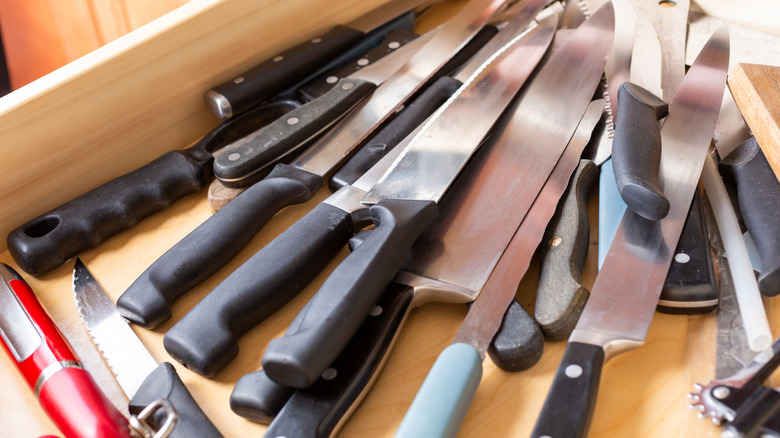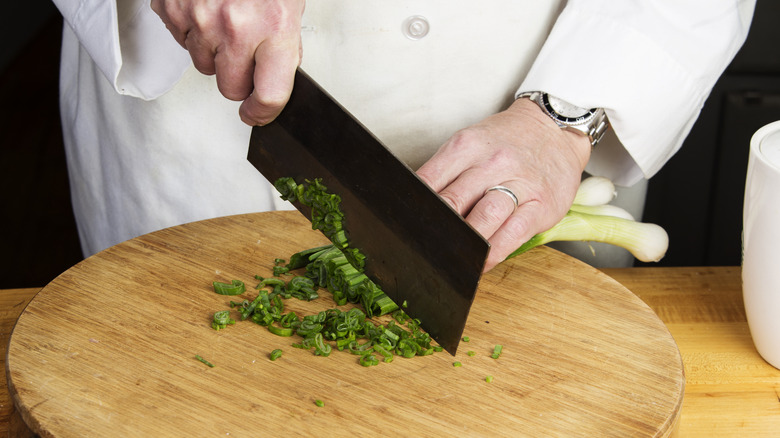Ditch Your Drawer Full Of Kitchen Knives For One All-Purpose Tool
No matter what dish you're preparing, having the right kitchen tools makes a great deal of difference. Most of us keep a variety of knives on hand, for instance — from bread knives to paring knives — to accomplish various tasks. But what if there was just one knife to rule them all? With one blade to replace several, home cooks could free up an awful lot of drawer space.
According to Aaron Zahl, chef and creator at Vegan Japanese, there is such a knife. He shared with Food Republic that a Chinese cleaver is a multipurpose tool that can do the work of multiple knives. "A Chinese cleaver is incredibly versatile because of its unique design," he explained. "[Its] broad, rectangular blade combines the precision of a chef's knife with the strength of a cleaver."
If you need to make finer cuts, such as chopping fresh herbs or slicing sticky garlic, "[the] thin, sharp edge handles delicate slicing and fine chopping with ease," Zahl explained. When you need to tackle a more heavy-duty job, like carving meat, making ground beef without a meat grinder, or safely opening a coconut, "the blade's weight gives it enough power for heavier cuts," he added.
With true versatility, a Chinese cleaver can tackle a messy, complicated task like descaling a fish, then instantly pivot to separating the head and tail from the body, then pivot once again to mincing herbs for its garnish. And the cleaver's multifunctionality doesn't end there. "The large surface area can also be used to crush garlic, tenderize proteins, or scoop ingredients from board to the pan," Zahl detailed, "making it an [all-in-one] tool that can replace several knives in a home kitchen."
More about the Chinese cleaver and choosing the right one
Different from a meat cleaver, which is heavier and has a duller, thicker blade designed to chop through bones and gristle, a Chinese cleaver is lighter in weight, sharper, and has greater dexterity. It earned the name cleaver not because it functions like a meat cleaver but because it looks like one, with its rectangular blade and stout handle.
An alternate name for the tool is a Chinese chef's knife, and its functionality is more reminiscent of an American chef's knife (though with even greater versatility). "The shape and weight of a Chinese cleaver are carefully balanced to make it both nimble and strong," Aaron Zahl detailed. "[Its] thin edge and flat profile create precise, paper-thin slices of vegetables or tofu while the tall, slightly weighted blade provides the momentum needed for firm chopping. The even distribution of weight across the blade lets you control pressure easily, using a light touch for finesse or more force for tougher ingredients, so one knife can handle a wide range of cutting techniques."
According to Zahl, "There are two main types: veg-cleavers (caidao) with thinner blades for precision slicing, and bone cleavers (gudao) with thicker, heavier blades for cutting through bones or very dense roots." A third, less commonly used type of Chinese cleaver is a chopper, and this style combines the attributes of the other two, with a blade that becomes thicker as it gets closer to the handle. As to the best option, Zahl favors the caidao for both speed and control, he explained.


